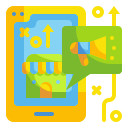Curriculum Pathways by Grade Level
Pair storytelling with blinking sequences that match plot beats, or use a light sensor to animate a character’s mood. Students learn cause and effect while practicing literacy and science. Share your favorite children’s book, and we will propose a matching microcontroller activity.
Curriculum Pathways by Grade Level
Collect temperature or noise readings, graph results, and compare hypotheses. Introduce design journals and quick code reviews to normalize debugging. Students start to see patterns and refine prototypes. Post a topic you teach, and we will map an interdisciplinary sensor project to it.




